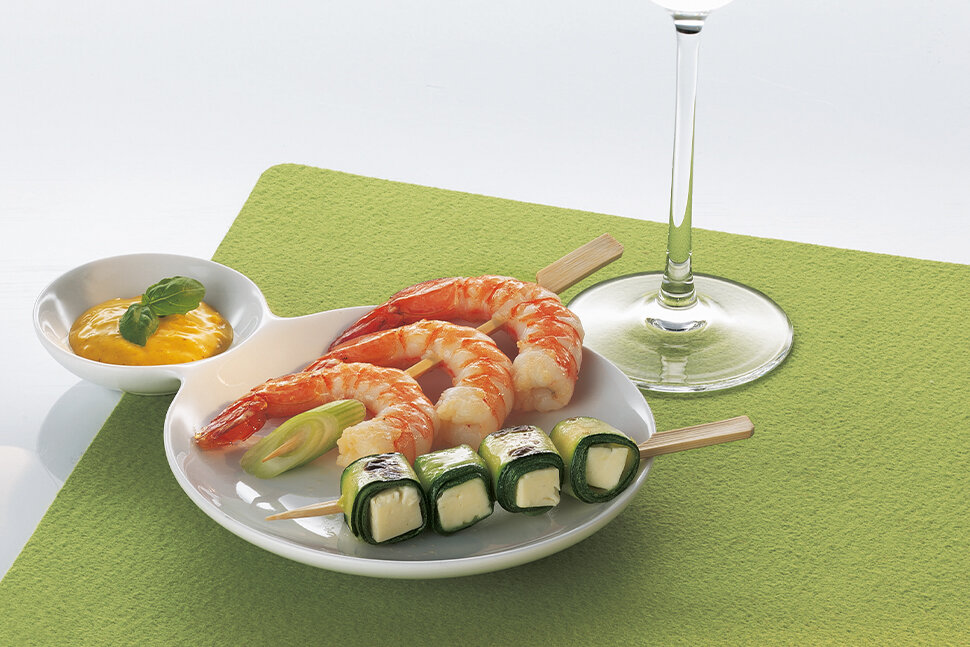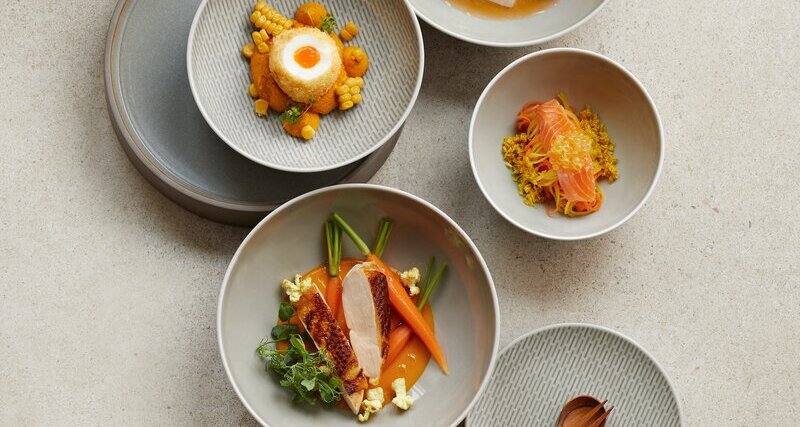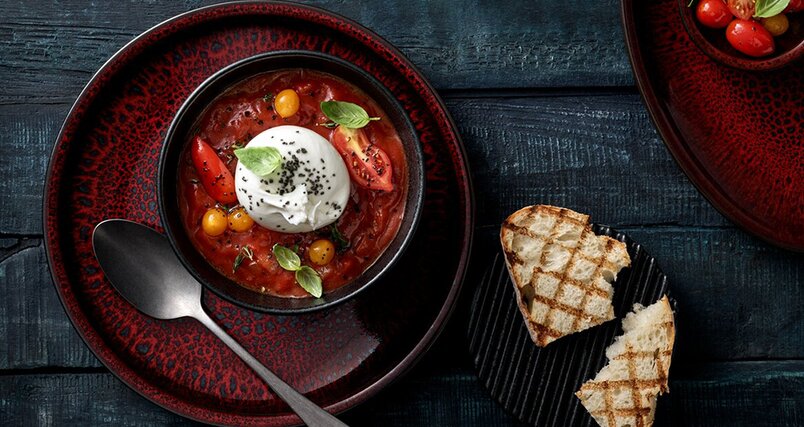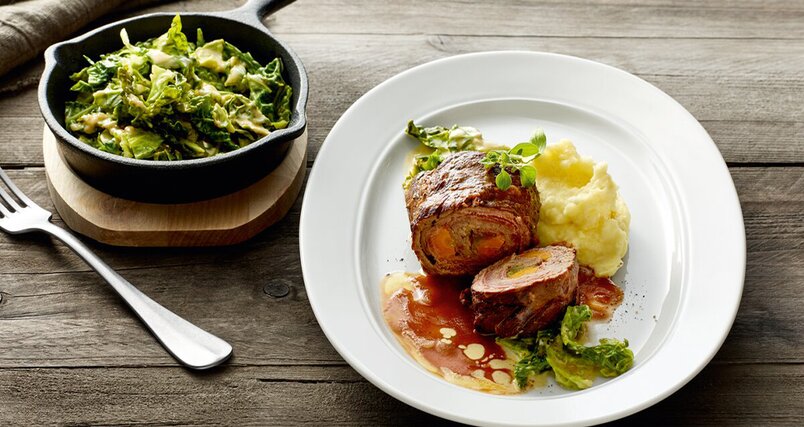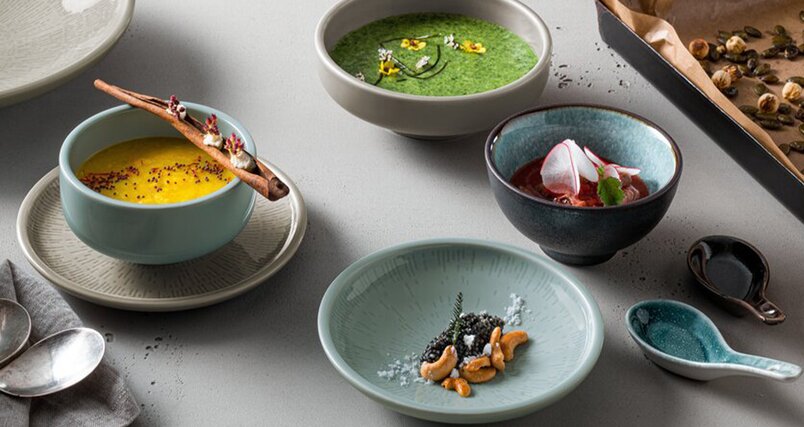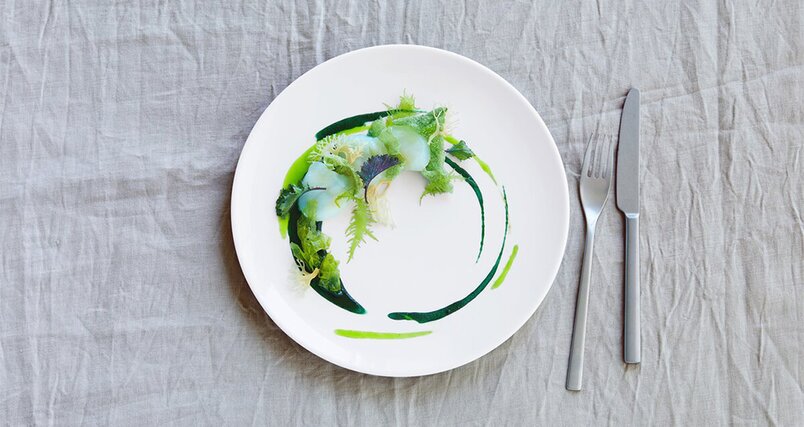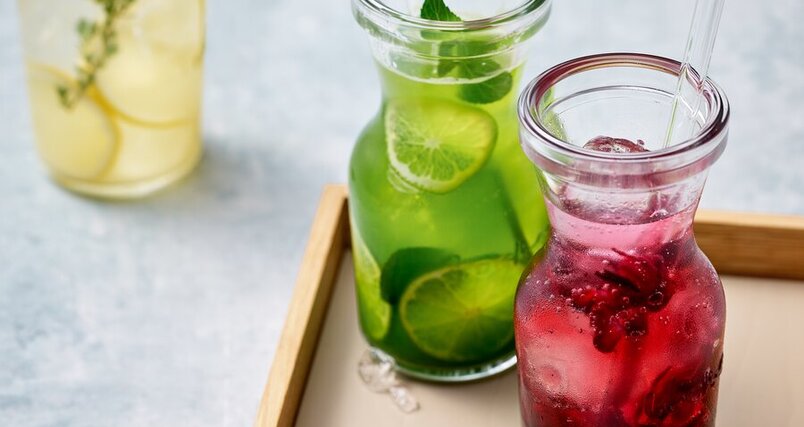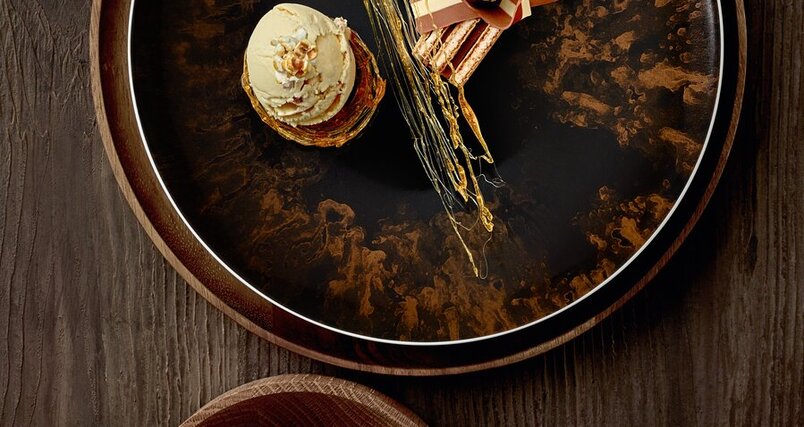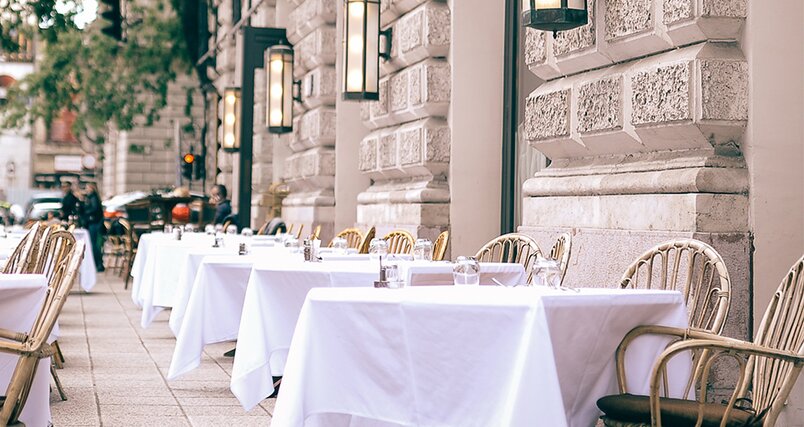Whether at the breakfast buffet, as a lunch, a snack for in between, or for dinner – colorful sausage and cheese platters have long established themselves as a classic in gastronomy and are always a highlight for guests, both in terms of taste and appearance. Then, a few years ago in Australia, the concept of the popular serving platters was applied to fish and seafood. Seacuterie was born.
All ingredients are fresh from the sea and do not only offer a high protein content and a touch of extravagance, but also many new flavor combinations. Especially for health-conscious people as well as fish and seafood lovers, seacuterie can provide a diverse variety and delight. What exactly is behind the Australian specialty and how you can prepare this treat for the guests in your restaurant, you will learn here.
What is Seacuterie?
The term seacuterie is derived from the French word "charcuterie", which refers to a delicacy. It is a culinary delicacy made from specially prepared sausages. Charcuterie consists of meat products of various origins and varied textures, all draped together on a serving platter. They include fine ham, bacon, various types of sausages, terrines, pâtés, patés and rilettes. The charcuterie platter can be supplemented with small side dishes such as different types of cheese, spreads, nuts, fruit, vegetables or bread products.
Seacuterie originated in Australia and takes advantage of the characteristics of charcuterie. Specialties from the sea such as fatty as well as low-fat fish varieties, smoked fish and various seafood such as shellfish and crustaceans are combined to form an aesthetic overall picture on a serving platter. Thanks to ultra-thin slices of fillet and small appetizers of each variety, the entire range can be tasted. The fish platter is rounded off by decoration with matching garnishes, dips and spice mixes.
Seafood – superfood for body and mind
Fish is considered an excellent source of energy and its consumption provides many healthy benefits for the body. Fish is very rich in high-quality proteins – the protein content in muscle meat is about 18-20%. The protein building blocks contained also possess many essential amino acids. Also, the fish protein can be very easily digested and utilized by the human body.
Another source of energy is fat. Although the fat content of white fish is very low, it can be as high as 20% in fatty fish varieties. These are not unhealthy, saturated fatty acids, but unsaturated, healthy fatty acids. In particular, fatty cold-water fish such as salmon, herring, tuna, mackerel and sardines are rich in long-chain essential omega-3 fatty acids. Marine fish additionally contain many micronutrients such as vitamins A and D, calcium, magnesium, zinc, iron, selenium, phosphorus, iodine and fluoride.
This combination of valuable energy sources, various vitamins and minerals makes fish a nutrient-rich food that not only tastes delicious, but is just as beneficial to health. Regular consumption of fish can support the human cardiovascular system and lower blood pressure.
Crustaceans have a similar high vitamin and mineral content as fish, but they are lower in fat. Besides, crustaceans such as crabs, lobsters and langoustines contain a lot of cholesterol. According to the latest scientific findings, external cholesterol intake is healthy because it lowers the body's own cholesterol production. So, the fish and seafood served in seacuterie offer your guests a food alternative that is both nutritious and health-conscious.
What can be served with seacuterie?
For a seacuterie, all the specialties come from the sea. There are no limits to your creativity. Rely on high-quality products, variety and creativity for a flavorful taste sensation. Likewise, ensure the sustainability of your goods by paying attention to the shortest possible transport routes, the fishing method as well as the fish stock. For delicious seacuterie serving platters, the following seafood can be selected:
- shucked oysters
- caviar or roe
- smoked salmon or salmon
- salmon spastrami or salmon rillettes
- smoked tuna
- tuna bresaola
- scallop mortadella
- prawn or prawn ceviche
- shrimp ceviche
- pickled prawns
- canned fish
- swordfish ham
- octopus salami
Fish roe or caviar, thanks to its unusual shape and color, is a visual highlight, which adds even more variety to the fish platter. Oysters and other shellfish, as well as mussels, provide texture. Fish varieties such as salmon or herring or smoked fish varieties such as trout classically belong on the seacuterie platter as well and offer your guests a rich selection. Apart from all seafood specialties, the seacuterie platter can be enriched with the following side dishes:
- sauces
- dressings
- dips & spreads
- crackers
- toast or other baked goods
- salads & herbs
- fruit varieties such as grapes or apples
- pickled or cooked vegetables
What must be kept in mind for the seacuterie platter?
Before restaurateurs add seacuterie to their menu, they should carefully consider whether it fits with the rest of their food offerings and their target audience. Fresh fish and seafood of good quality are in the upper price range and are more difficult to procure than other foods.
Likewise, the greater preparation effort, the know-how of your staff and proper storage are aspects that play a role when offering seacuterie. To ensure the freshness of fish specialties and prevent food infections caused by bacteria and salmonella, it is essential to ensure a continuous cold chain during transport.
Seacuterie – an extravagant addition to the restaurant menu
Seacuterie is not for everyone and will not displace other serving platters. However, it is an innovative and healthy alternative to the classic cold cuts and cheese platter and an absolute added value to any Mediterranean or upscale restaurant.
